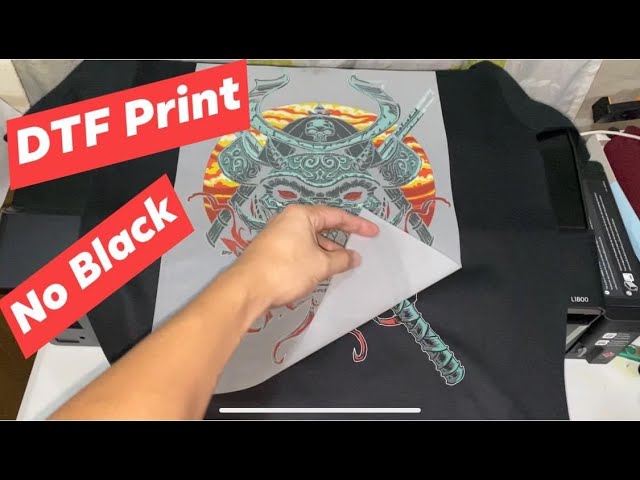
DTG printing and DTF printing are the two most popular methods of printing on clothing on the market today.
The most important thing is which printing method fits your needs.
If the customer requires a garment made of natural fabric, then choose DTG printing.
If the customer needs more colors and more types, then the DTF printing method is more suitable.
Differences Between DTF and DTG Printing
DTG stands for direct to garment, which literally means direct printing on clothes, also known as a direct cotton spraying machine.
DTF stands for direct to film, with the help of PET film as a transfer medium, then with the help of a heat press, (this feature is somewhat similar to the sublimation printing method) and finally transfer to the finished product.
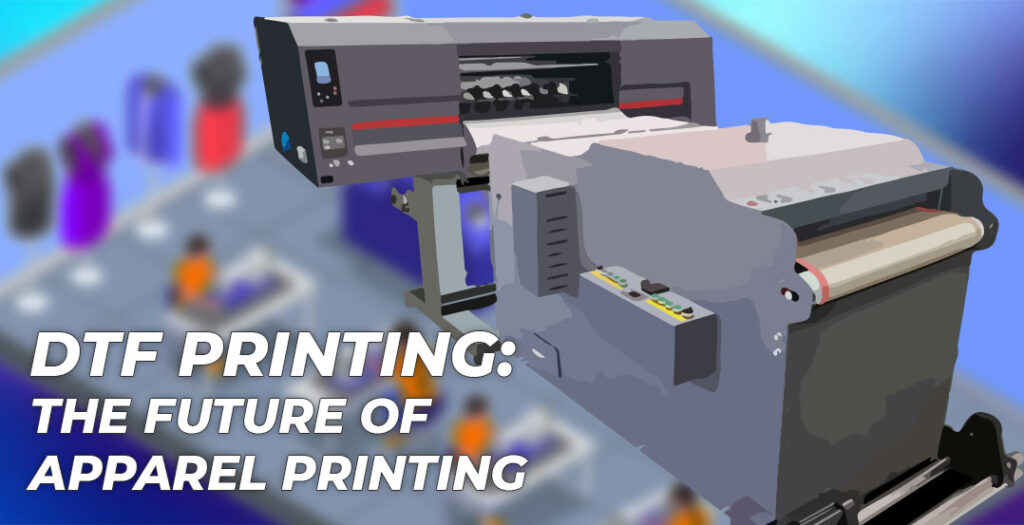
DTG printers specialize in printing on cotton, while DTF printers can print on versatile fabrics like cotton, polyester, spandex, and linen.
DTG and DTF printing steps
DTG printing process in detail:

1. First comes the pre-treatment – spread the pre-treatment solution evenly, pay attention to the difference between dark and light clothes during the pre-treatment.
Dark-colored cotton clothes use a special solution for pre-treatment, which is different from the solution used for light-colored cotton clothes.
Without pre-treatment, the printing effect will be poor.
2. Use a heat press to dry the shirt at the correct time and temperature according to the manufacturer’s purchase instructions for reference.
3. Direct spraying: Place the cotton shirt or other cotton fabric on the DTG printing platform and secure it to make sure it won’t move.
4. Design the printed pattern, start the DTG printer and print the design directly onto the shirt.
5. Use the heat press again to press and fix the color of the design you just printed, and that’s it, you’ve got the final product.
DTF printing process in detail:
Unlike DTG printing, DTF does not require pre-processing.
- First make a drawing of the design and make a good choice of spot color.
- Enter the instructions, and let the DTF printer print the pattern on the PET film.
- Cut out the PET film, then use a heat press to press it and finally remove the PET film and you have a finished product.
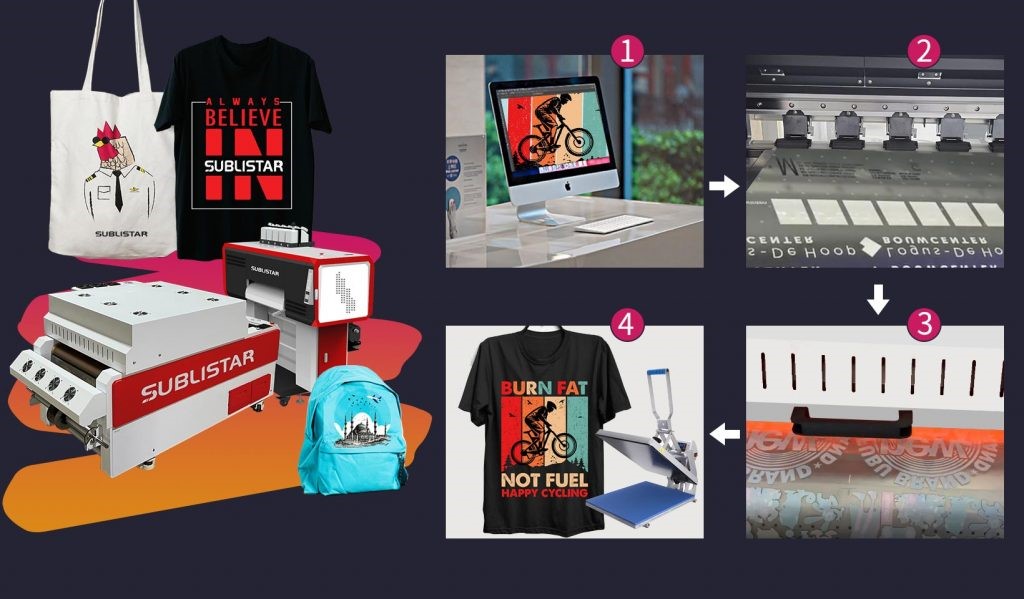
The two steps are similar, everyday practice leads to better results, and the printing process can be learned in a few minutes in order to obtain a complete finished product.
Use of Different Types of Fabrics for DTG and DTF printing
The DTF printing machine is a “universal printing machine” in the clothing industry, and is not limited to fabrics, any fabric can be used for this type of printing, and any color shade of the fabric can be printed without problems.
Polyester, cotton, linen, blends and other materials can be printed with the original color of the design.
DTG printing is suitable for natural fabrics, such as cotton, bamboo, linen and other fabrics that can be printed by direct printing.
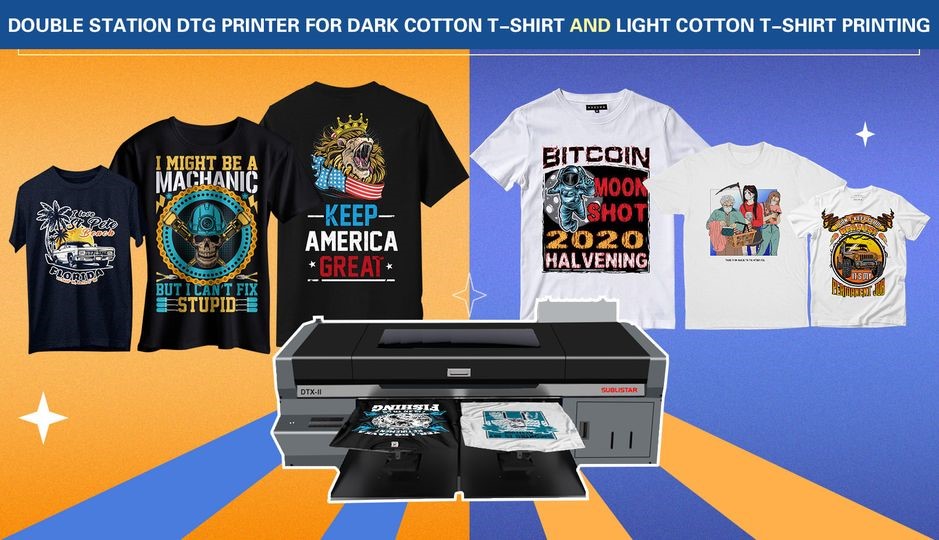
This is because ink bonds better to natural fabric fibers than to synthetic fabric fibers.
DTG Printing Quality vs. DTF Printing Quality
DTG printing is direct printing, where the design is printed directly onto the garment.
However, because the fabric absorbs the ink, the vividness of the print may be reduced after several washes, especially on black or colorful clothing.
DTF printing is equivalent to transfer printing on film, so in the initial comparison, the biggest difference between DTF and DTG is that DTF is not airy, even if it is soft to the touch, it is resistant to washing, does not fade, and the color is very bright.
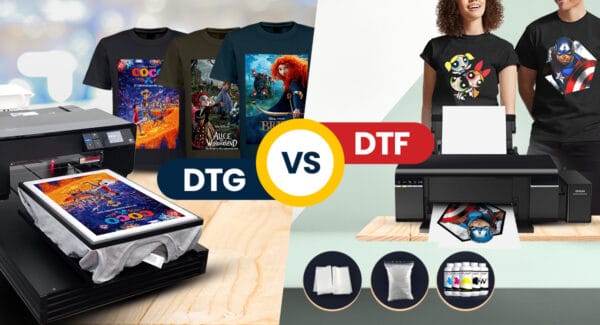
Currently, with the progress of technological updates, especially SUBLISTAR, as one of the standards of DTF printers, has launched a number of new products to overcome certain difficulties, for example, the newly introduced airy film can be a good solution to the problem of impermeability.
Environmental acceptability of DTG and DTF printing
Today, both DTG and DTF printing can achieve the environmental protection standards required by developed countries, but both printing methods still have the problem of releasing waste during the printing process.
With DTG printing, there is currently a problem with self-starting: there is an automatic cleaning function that produces waste ink during this process.
Although it is environmentally friendly, due to the larger quantity it affects the total production costs, and the ink for DTG printing is more expensive than the ink for DTF printing.
On the other hand, hot melt powder for DTF printing can always be recycled, and PET film can be recycled too.
DTF printing uses less ink than DTG printing, so we have lower production costs and less waste.

Both DTF printing and DTG printing are currently the most popular ways of printing on clothing, which is very suitable for personalizing clothing.
The two printing methods can be used together or separately, and both can bring very good earnings.